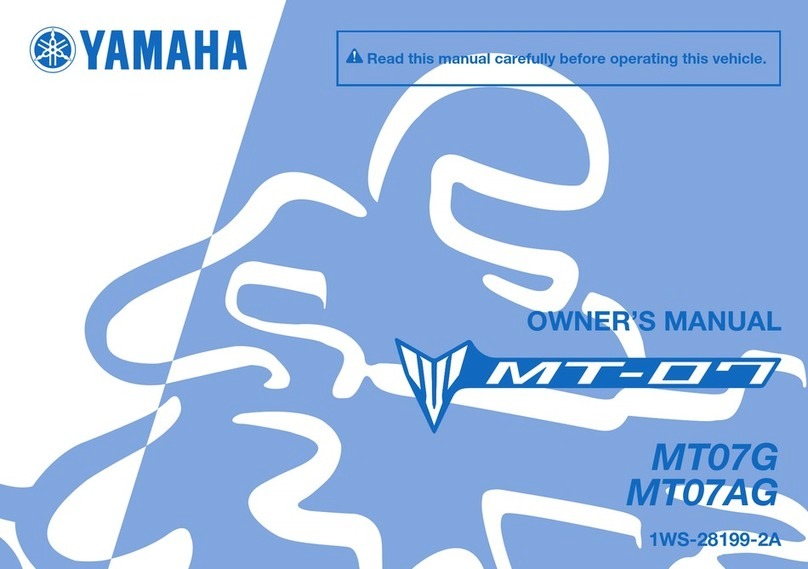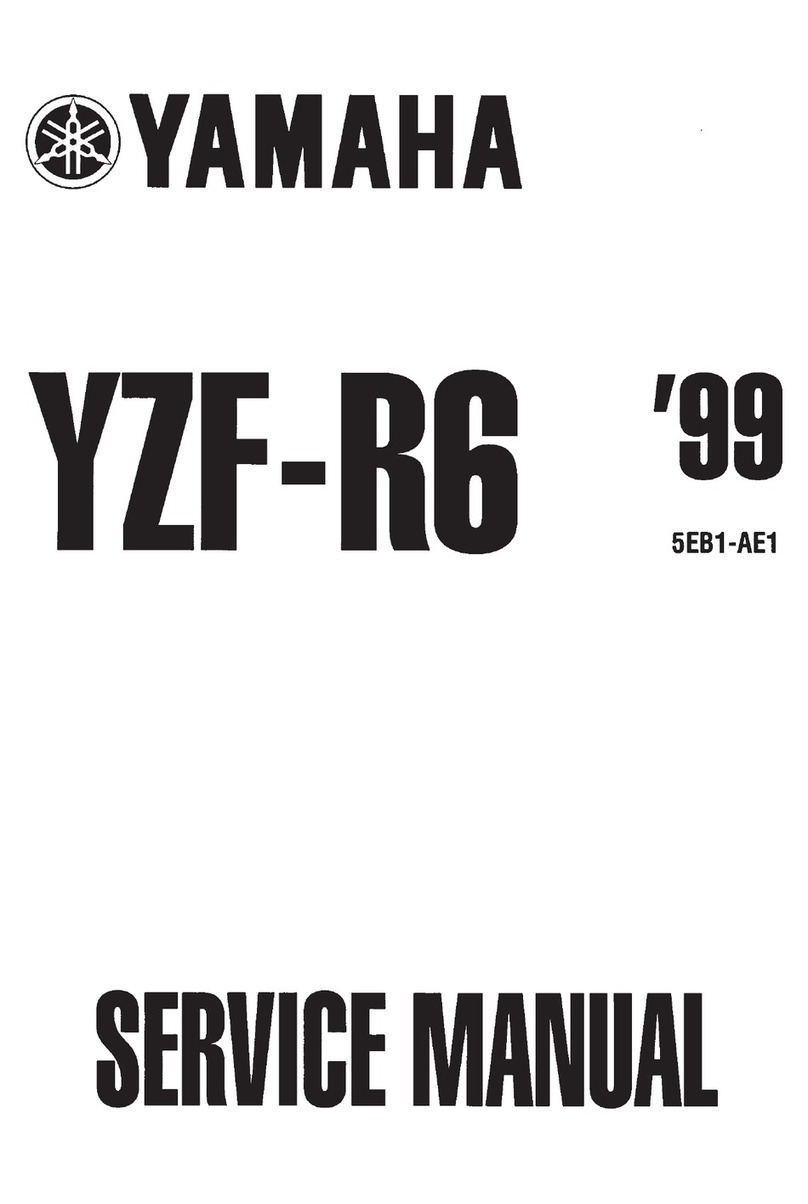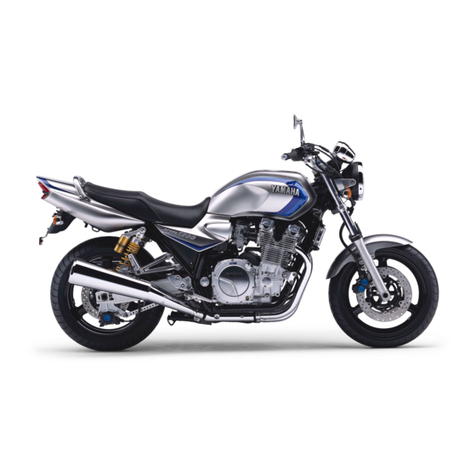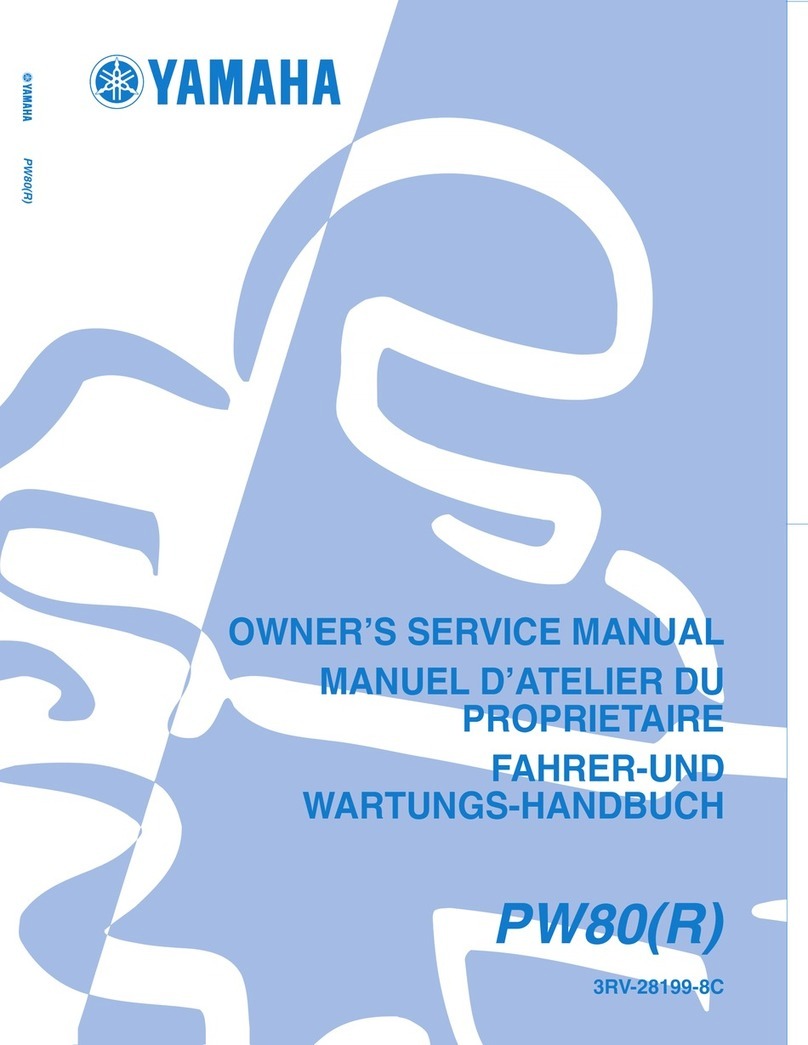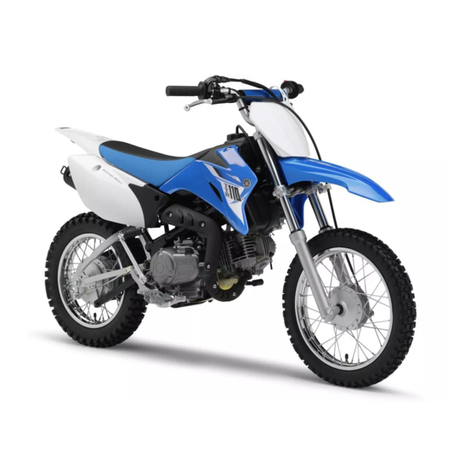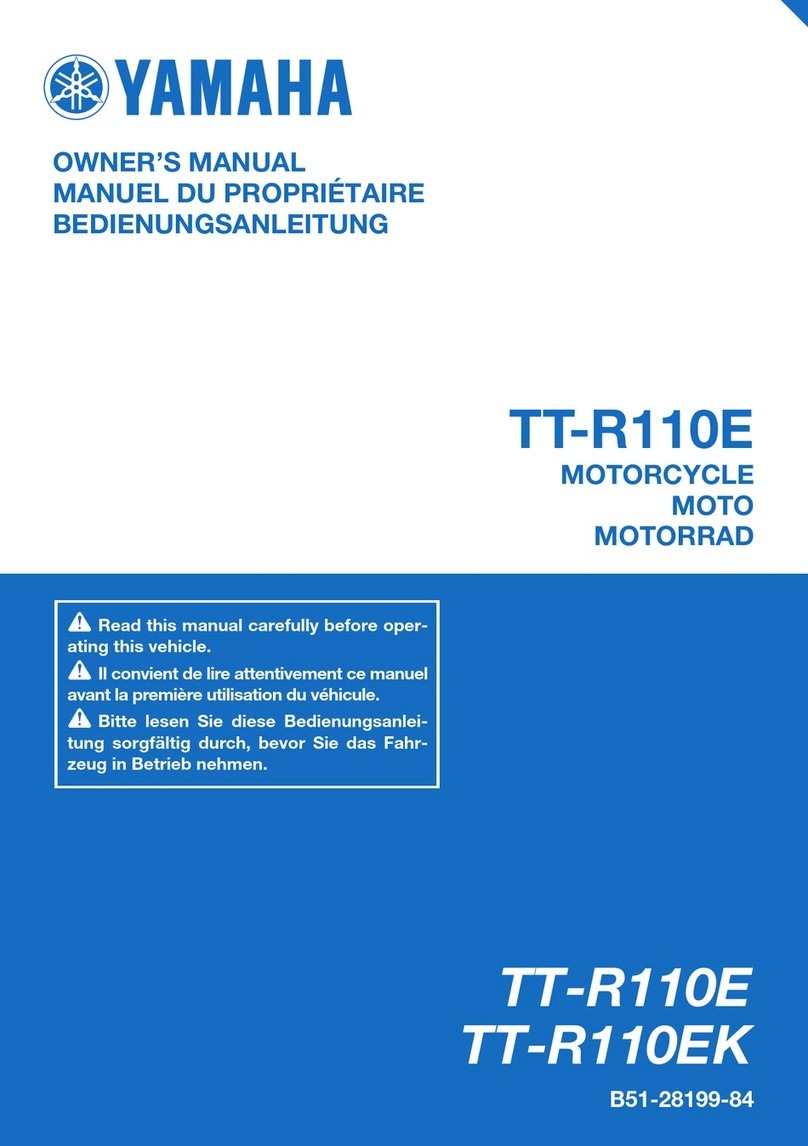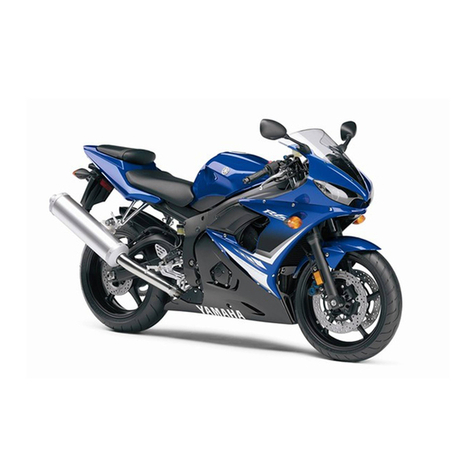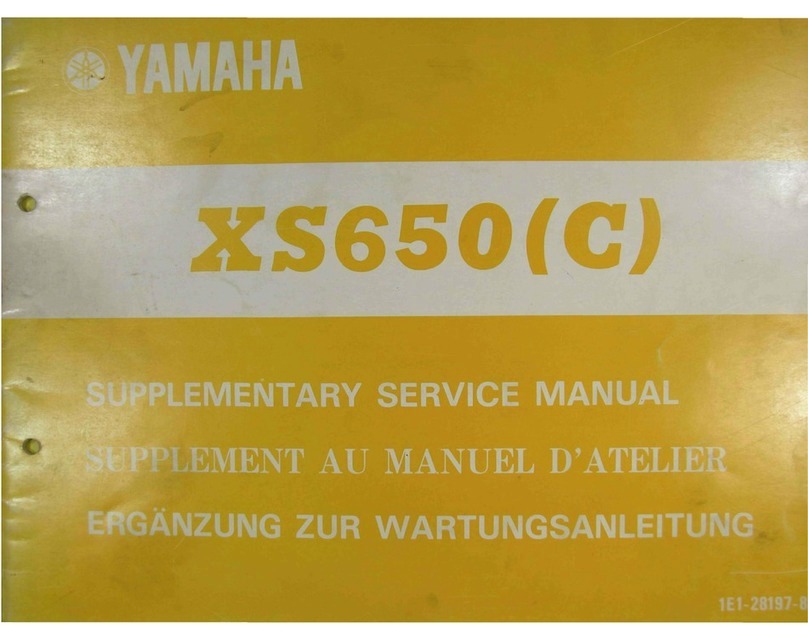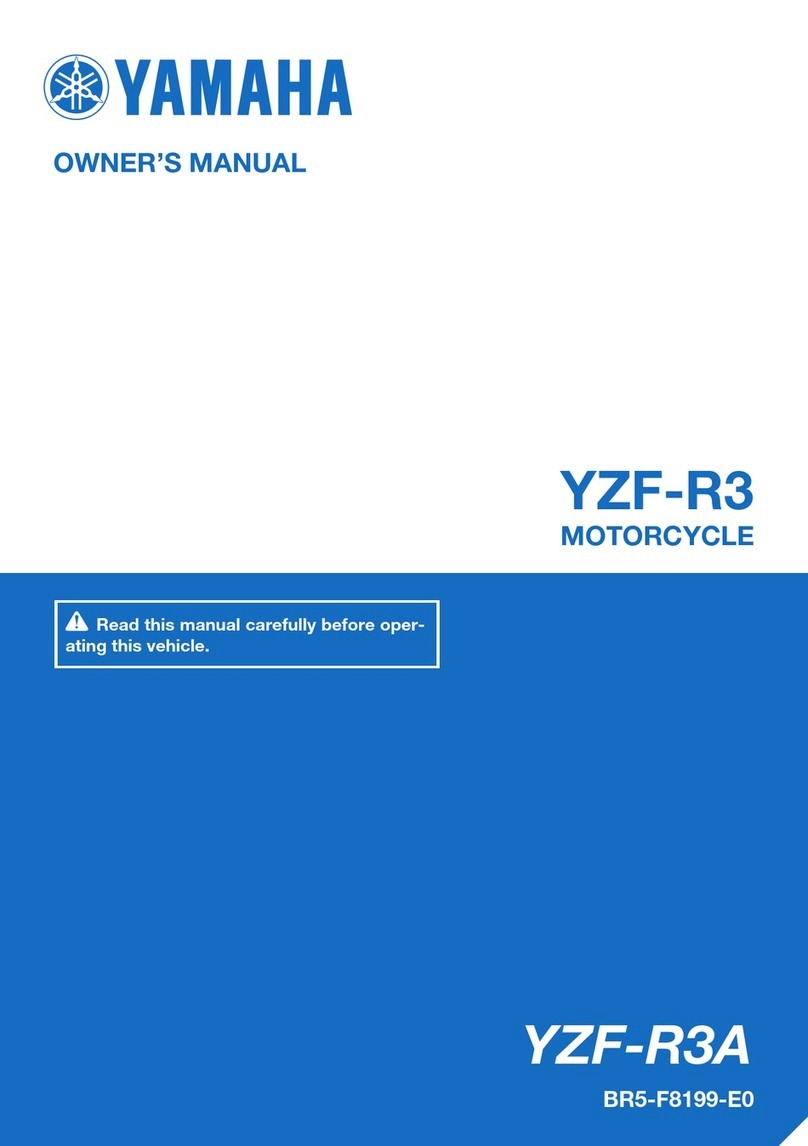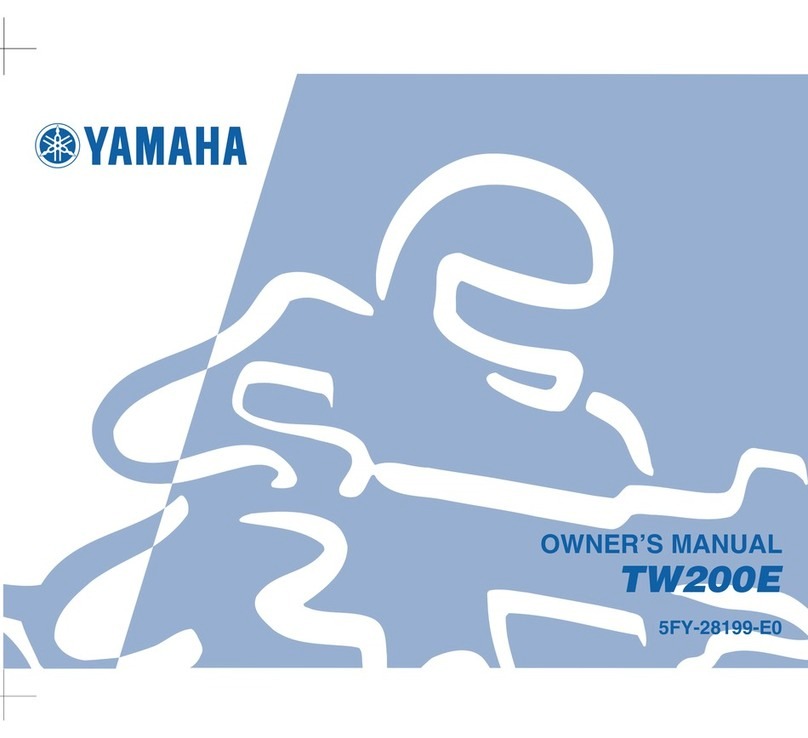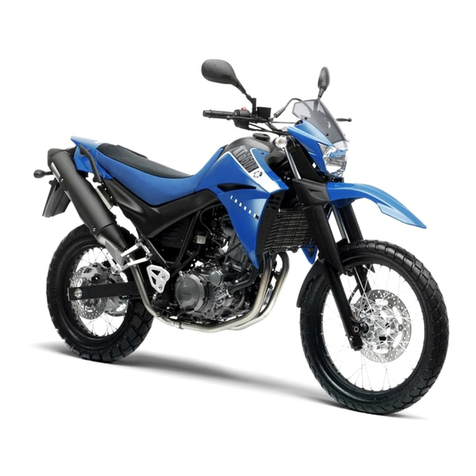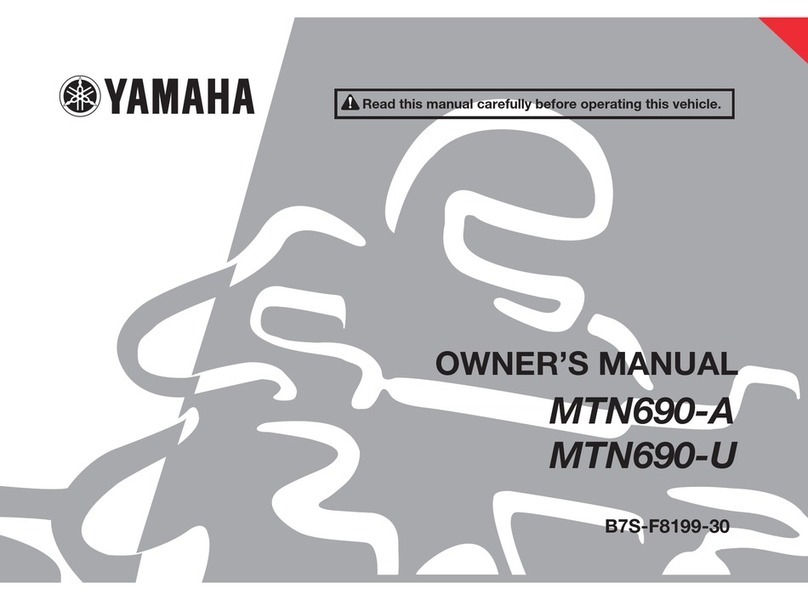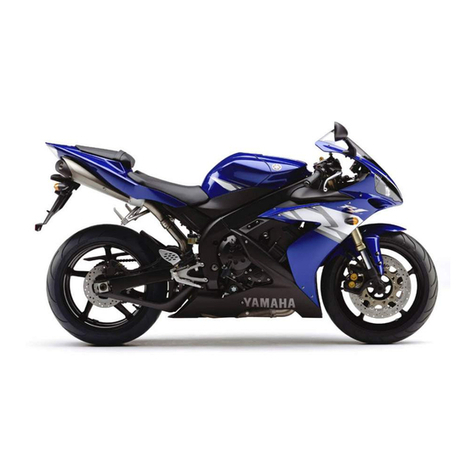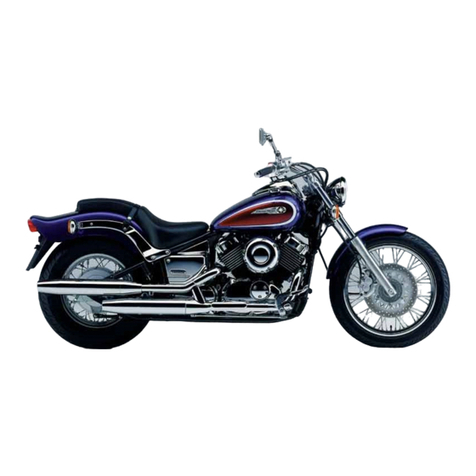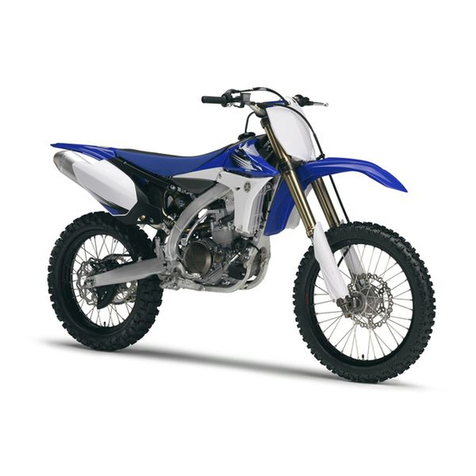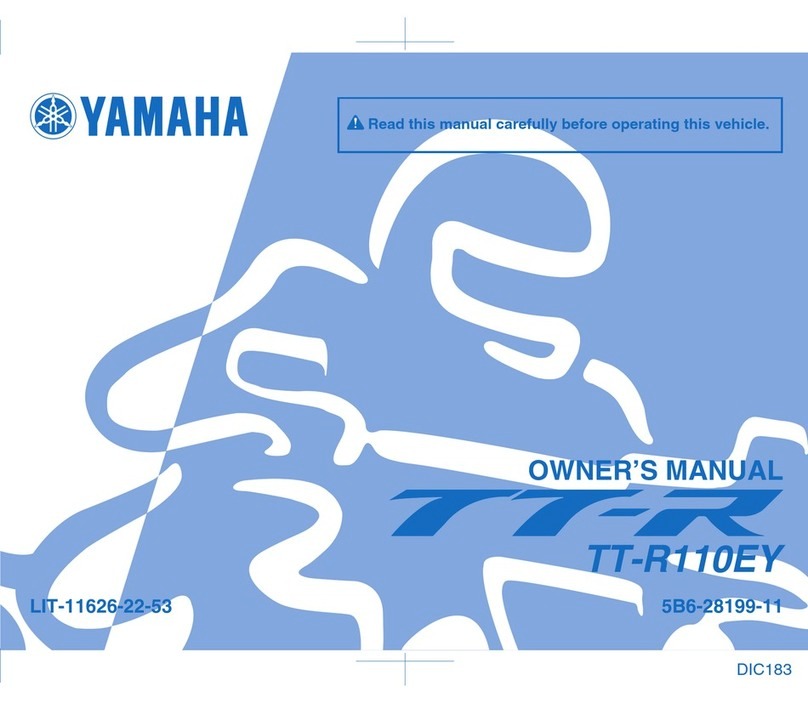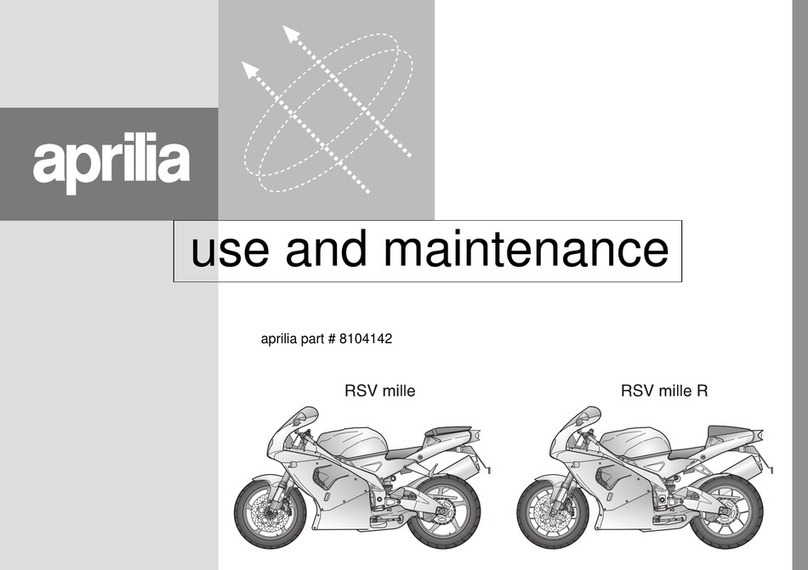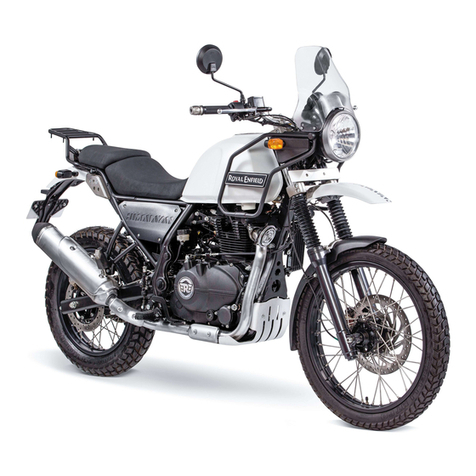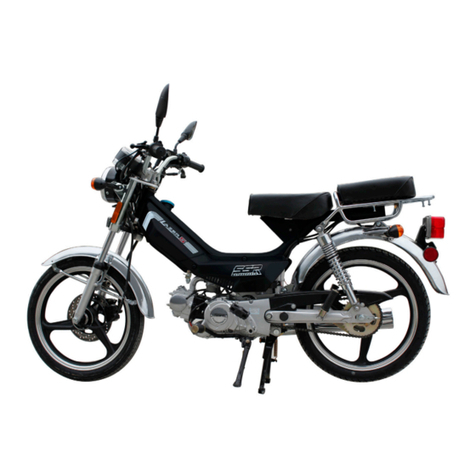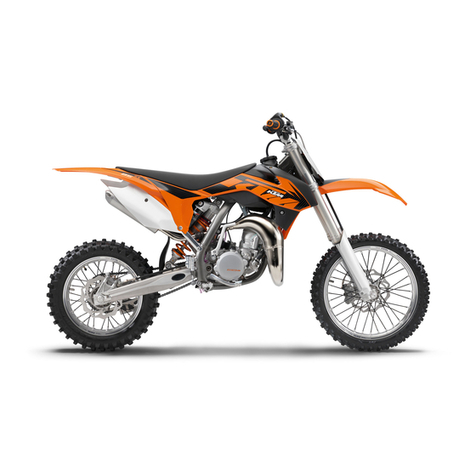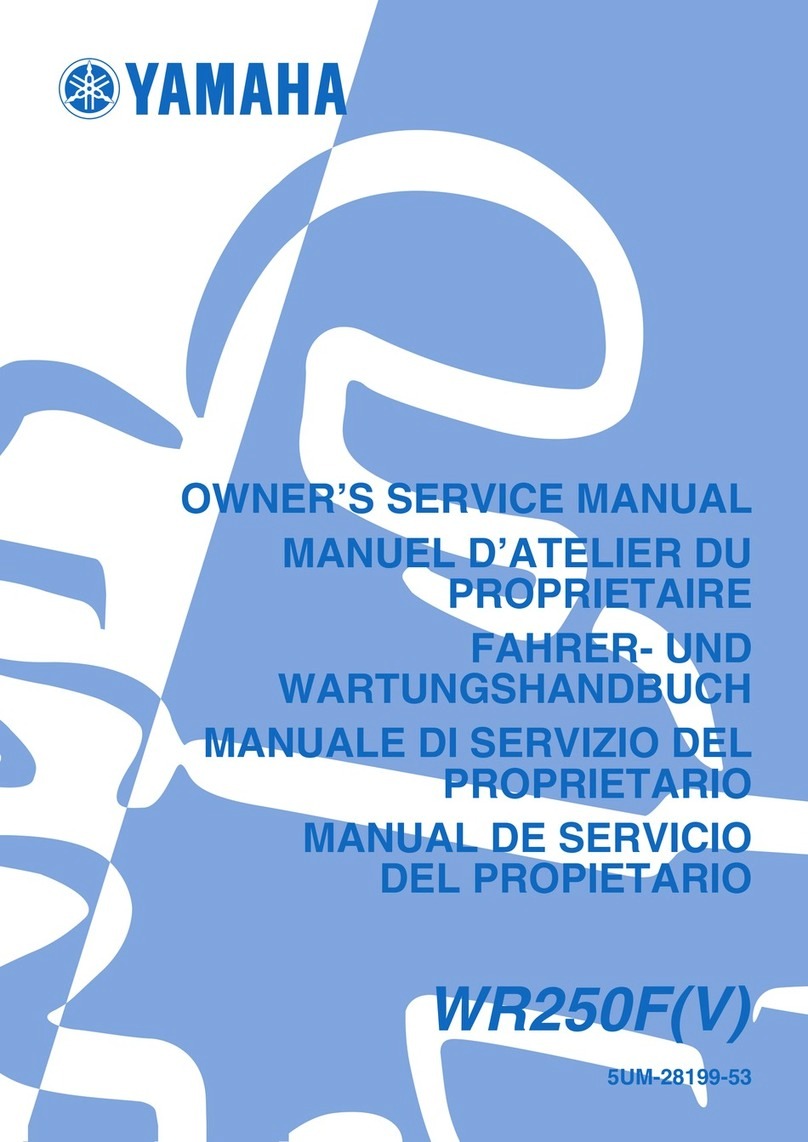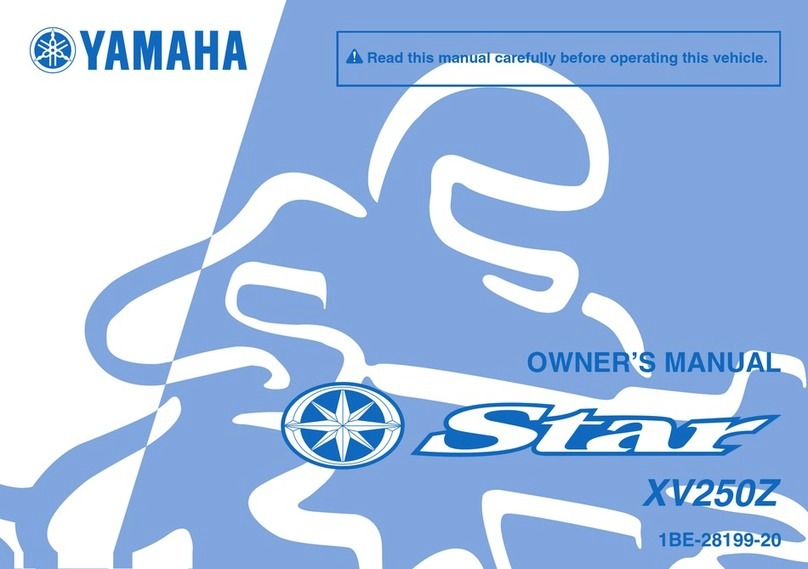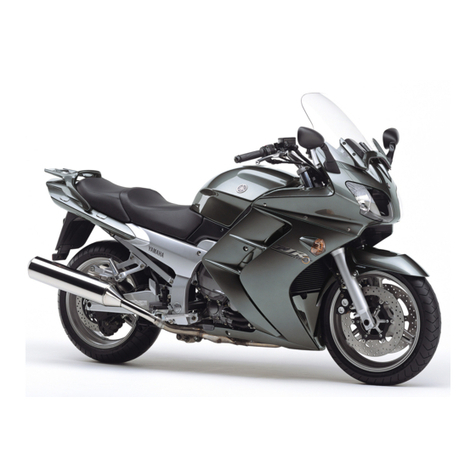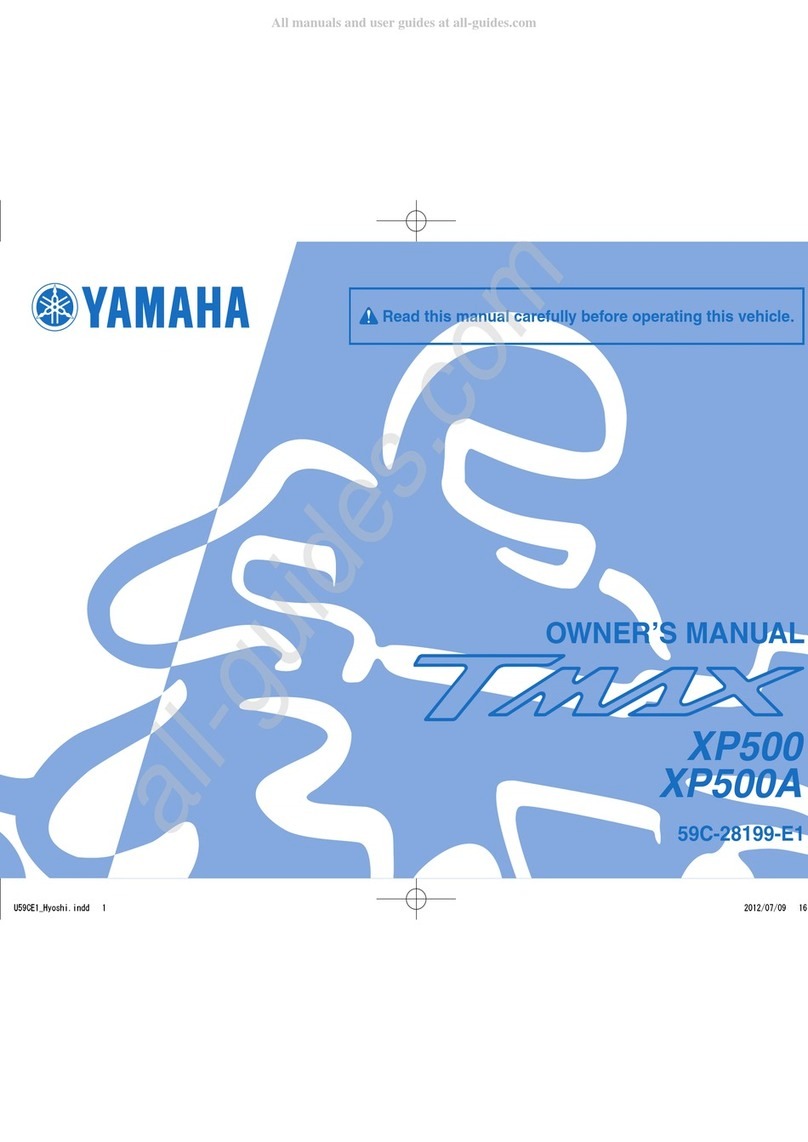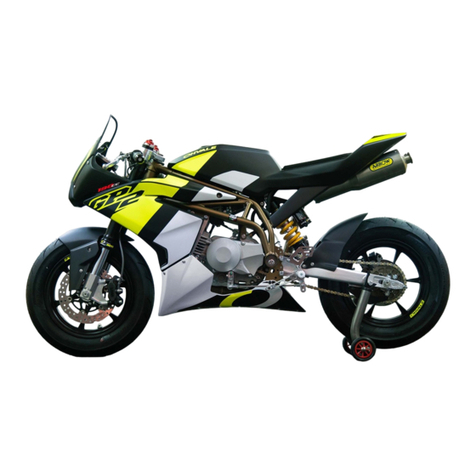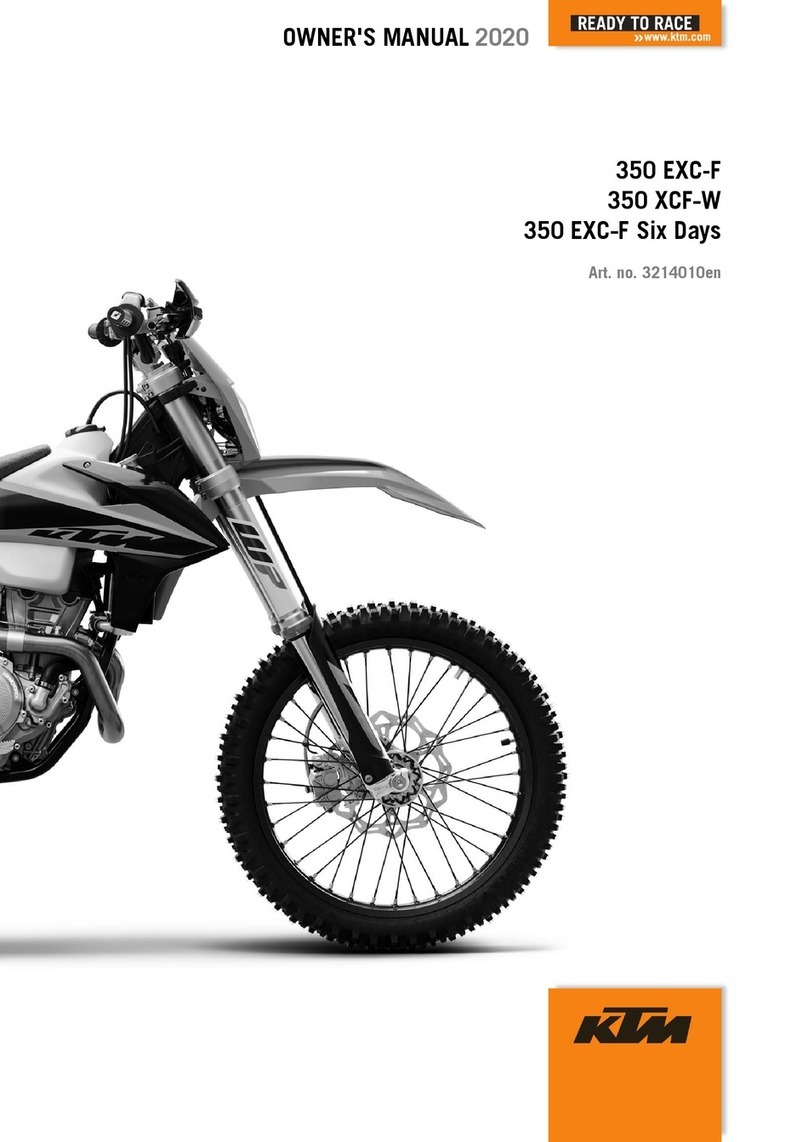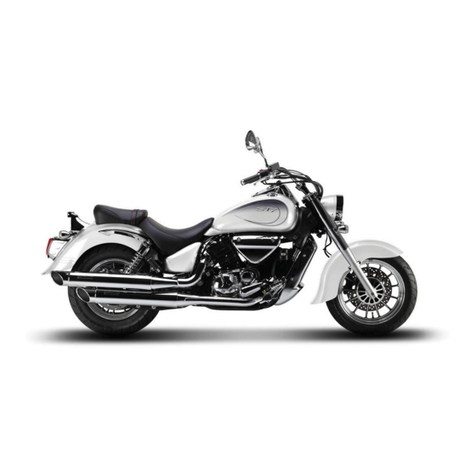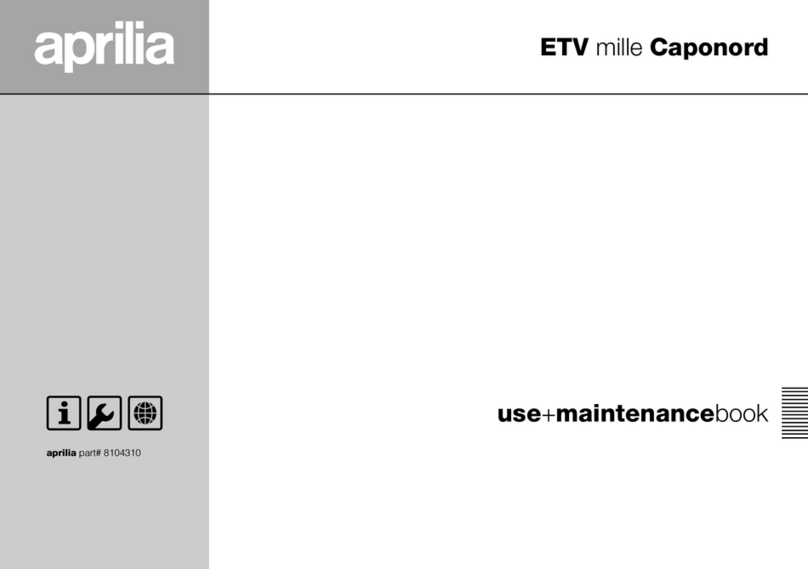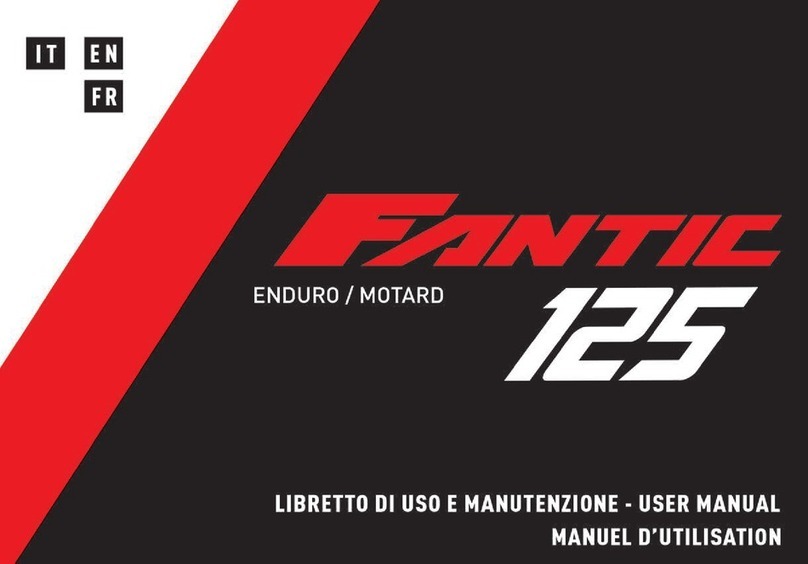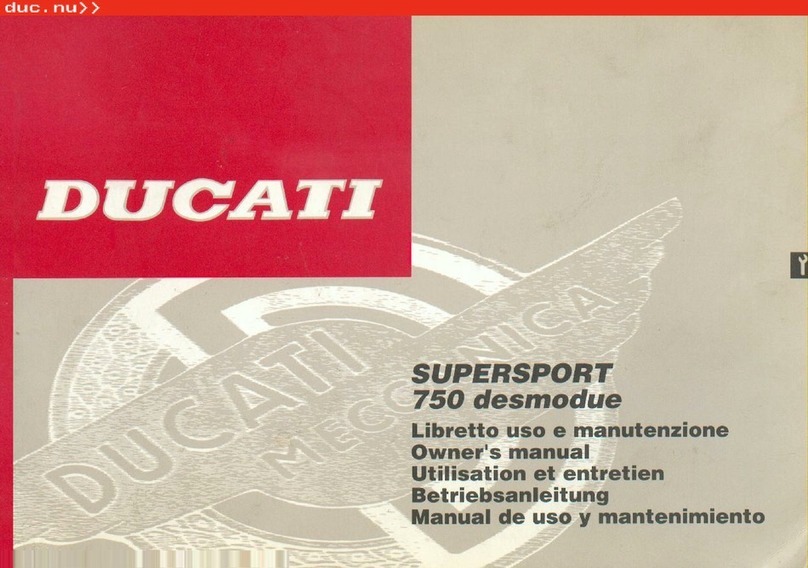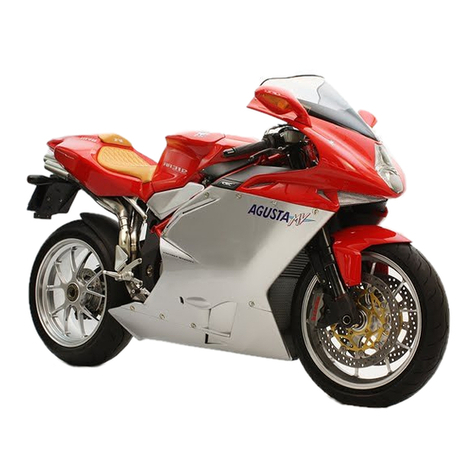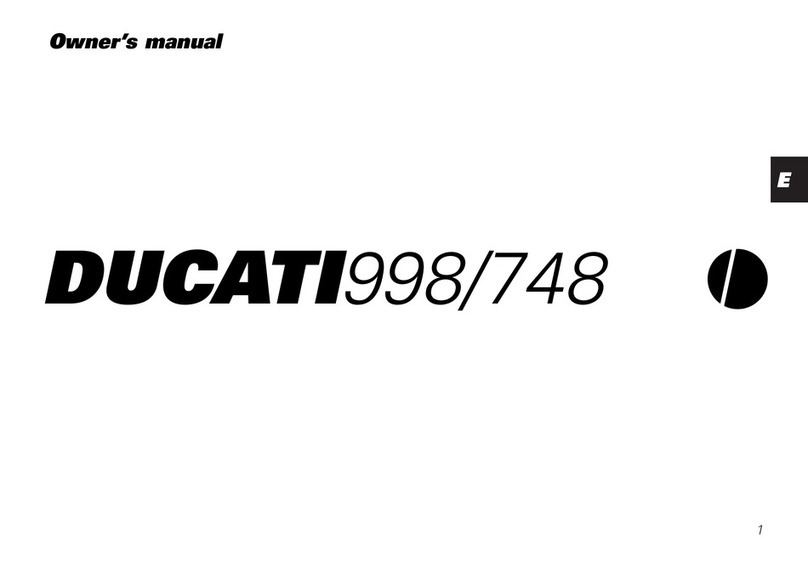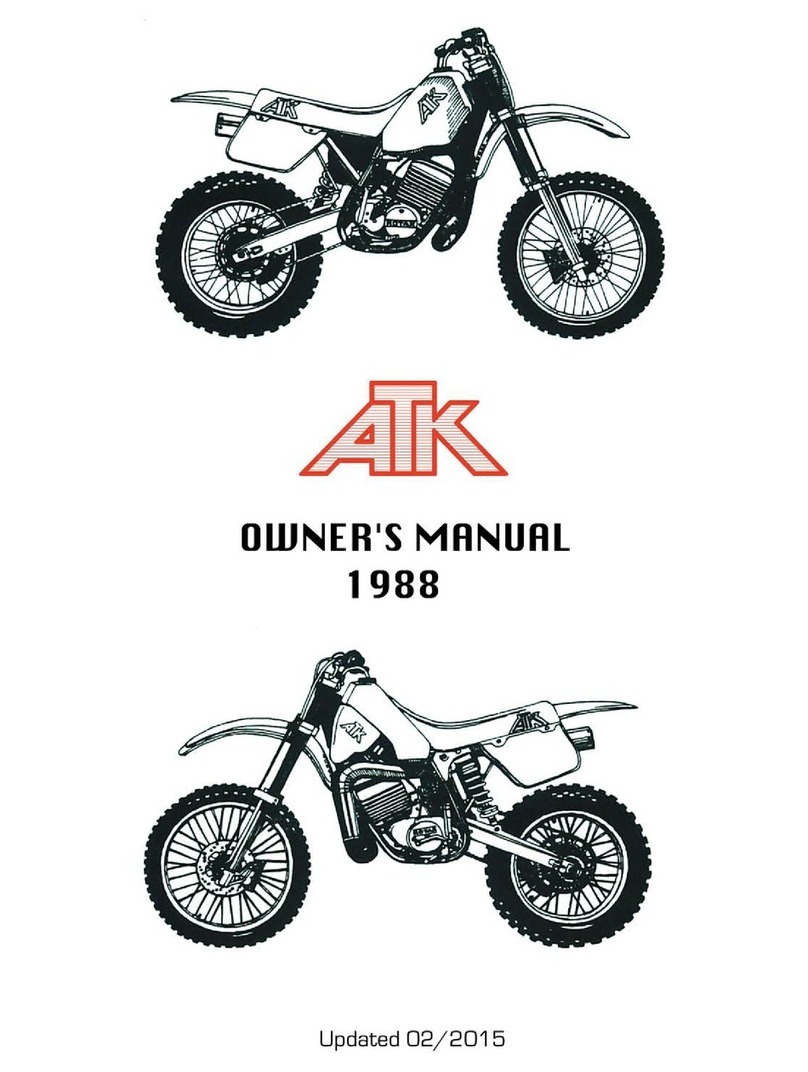
Table of contents
Location of important labels........... 1-1
Safety information............................ 2-1
Description ....................................... 3-1
Left view ......................................... 3-1
Right view....................................... 3-2
Controls and instruments ............... 3-3
Special features .............................. 4-1
Cruise control system..................... 4-1
“D-MODE” ...................................... 4-3
“TCS-MODE”.................................. 4-4
QSS ................................................ 4-6
BC................................................... 4-6
Instrument andcontrol functions... 5-1
Main switch/steering lock............... 5-1
Handlebar switches........................ 5-2
Indicator lights and warning
lights............................................ 5-4
Display............................................ 5-7
Settings MENU............................. 5-12
Clutch lever .................................. 5-16
Shift pedal .................................... 5-17
Brake lever.................................... 5-17
Brake pedal .................................. 5-18
Brake control system (BC)............ 5-18
Fuel tank cap................................ 5-19
Fuel............................................... 5-20
Fuel tank breather hose and
overflow hose ............................5-21
Catalytic converter ........................ 5-22
Seat...............................................5-23
Rider footrest position ..................5-23
Handlebar position .......................5-24
Adjusting the front fork .................5-24
Adjusting the shock absorber
assembly....................................5-27
Luggage strap holders ..................5-29
Auxiliary DC connectors ...............5-29
Sidestand ......................................5-29
Ignition circuit cut-off system .......5-30
For your safety – pre-operation
checks ...............................................6-1
Operation andimportant riding
points .................................................7-1
Engine break-in...............................7-1
Starting the engine..........................7-2
Shifting ............................................7-3
Parking ............................................7-5
Periodic maintenance and
adjustment ........................................8-1
Tool kit ............................................8-2
Periodic maintenance chart for the
emission control system..............8-3
General maintenance and
lubrication chart...........................8-5
Checking the spark plugs............... 8-9
Canister (for California) ................. 8-10
Engine oil ...................................... 8-10
Why Yamalube.............................. 8-12
Coolant ......................................... 8-13
Air filter element............................ 8-14
Checking the engine idling
speed ........................................ 8-14
Valve clearance............................. 8-15
Tires .............................................. 8-15
Cast wheels .................................. 8-17
Adjusting the clutch lever free
play............................................ 8-18
Checking the brake lever free
play............................................ 8-18
Brake light switches ..................... 8-19
Checking the front and rear brake
pads .......................................... 8-19
Checking the brake fluid level ...... 8-20
Changing the brake fluid .............. 8-21
Drive chain slack........................... 8-22
Cleaning and lubricating the drive
chain.......................................... 8-24
Checking and lubricating the
cables........................................ 8-24
Checking and lubricating the
throttle grip................................ 8-25
Checking and lubricating the
brake and shift pedals............... 8-25
Checking and lubricating the
brake and clutch levers ............. 8-26
UBAM10E0.book Page 1 Wednesday, November 4, 2020 11:05 AM

